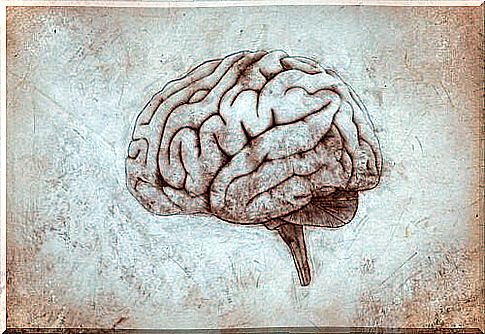The Resilient Personality: I’m Still Here

Some people have the incredible ability to overcome very painful emotional issues or events. We could say they have a resilient personality, a survivor personality. Standing in the face of adversity requires a great deal of positive attitude, persistence and integrity.
The loss of a loved one, physical or mental abuse, natural disasters or failure in any area of life are circumstances that put people to the test. We can develop the ability to be strong in dramatic conditions and to swim against the tide. In psychology, this is known as the resilient personality.
There are two types of resilient personality. We can distinguish, on the one hand, the ability to protect one’s identity under pressure. And under destructive conditions. And on the other hand, the ability to maintain a positive vital attitude in harmful circumstances. It is a dynamic process of adaptation in adverse and traumatic conditions.
Suffering and the brain
Psychological suffering changes the brain. Maintaining a constant state of alert generates amounts of cortisol that, under normal circumstances, are not needed. Our alarm system needs cortisol to prepare our body for an emergency. However, when the levels are excessive and constant, growth cannot take place properly. It also affects immune responses and attention span.
Testosterone plays a crucial role in chronic stressful situations. These hostile situations cause testosterone levels to drop drastically, as does an individual’s assertive abilities. As a result, a lack of attention arises, as well as problems in finding solutions. Creativity is weak and ideas stereotypical (repetition of usual patterns).

Is resilient personality a categorization?
In post-traumatic stress situations, a gradual distinction can be made between the non-resilient personality and the resilient personality. There are many degrees between these two extremes. In poorly resilient personalities, the memory of traumatic memories is reactivated more intensely and frequently. We do it compulsively, in the form of intrusive thoughts. These memories activate areas of the brain such as the locus cœruleus, amygdala, hippocampus and neocortex.
Resilient personality appears to be the result of various processes that compensate for these activations during hostile situations. Dehydroepiandrosterone (DHEA) plays a very important role here. It is responsible for reducing the activity of cholesterol and inhibiting excess glucocorticoids and glutamate.
In this way, heart and ischemic infarctions are prevented. It has been observed that, statistically, subjects with greater intellectual capacity and greater cognitive activity have higher levels of resilience. They seem to be able to manage and treat trauma more easily.
Empathy, self-knowledge, a sense of humor, a positive approach to situations and awareness of the present are several abilities that can be observed in resilient people. They are flexible people who seek meaningful purpose in their life. They have good skills for social interaction and know how to live with frustration and uncertainty.
Resilience can be worked on
Our emotions and the way we deal with an event are not so conditioned outwardly as inwardly. The key lies in how we interpret them. Training your resilience means understanding that negative emotions block us and that positive ones push us towards change.
This means that we can develop our ability to give positive responses in adverse situations. In so many cases we do not have the power to change the circumstances. However, we can still develop forces that facilitate responses and help us reduce our discomfort.
So there are a lot of things we can do. Rewrite our history, help others, reduce stress and be mentally prepared to rearrange our beliefs and goals. Changing our personal speech allows us to see the world and to see ourselves in a different way.

We can begin to see conflicts as opportunities for growth. Remembering how we have already overcome obstacles also generates a greater capacity for resilience.
Being strong takes great doses of persistence and confidence in whatever we can develop. It takes effort. At the same time, we are learning from our past. And we allow ourselves to feel strong emotions. By learning to manage them intelligently.










